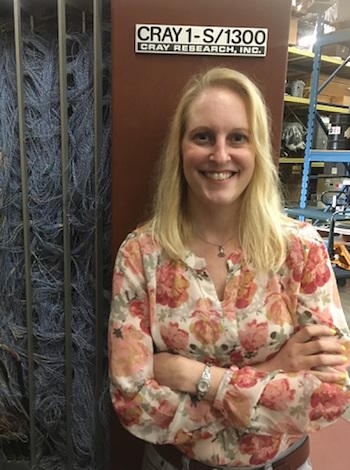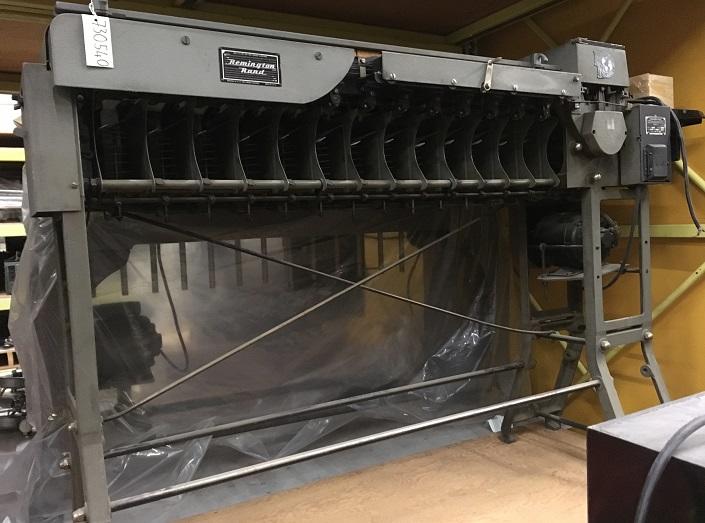

By Linda Scales
Five decades after computer science programs were introduced in Canadian universities, women’s enrolment in them has stagnated at about 25%. As part of her quest to understand why, a uOttawa doctoral student in the Department of History recently had the opportunity to examine a fascinating trove of museum artifacts related to her thesis topic.
Jennifer Thivierge, who is researching the development of computer science programs in Canada, is one of two recipients of the new Ingenium-uOttawa Fellowship in Gender, Science and Technology, offered to two graduate students from any faculty. The four-month fellowships allow recipients pursuing public history projects to consult the three museum collections that make up Ingenium: the Canada Agriculture and Food Museum, the Canada Aviation and Space Museum, and the Canada Science and Technology Museum. In addition to Thivierge, a second inaugural recipient, Ghazaleh Jerban, a common law doctoral student, will research gender aspects of intellectual property law.
Keypunch girls
This past summer, the Canada Science and Technology Museum provided space, resources and access to its collection to Thivierge, so she could study the “keypunch girls” and the history of Canadian women in computer science. This included access to artifacts such as keypunch machines and card sorters, from the 1950s to the 1980s.
Keypunch girls was the name given to women who punched holes — by hand or with keypunch machines — in data cards that were fed into adding machines or tabulators that read the information stored on them. Their untold story may help to support current theories about why women are underrepresented in university computer science programs. Thivierge will integrate their story into the final chapter of her thesis, as well as in either an article or a book.
Gender discrimination
Keypunch girls were at the bottom of the computer food chain. The exclusively “pink-collar” job required minimal training and was considered an acceptable occupation for women before they married and started families — the typical path for women in the early 1960s. Even for those women who enjoyed the job, there was zero chance of advancement.
“In the beginning, ‘coding’ (as programming was then known) was a job option very open to women,” says Thivierge. “But their use of the computer was overtaken by men, who capitalized on the job opportunities available to them by enrolling in Canada’s university computer science programs.”
Computer science became a male-dominated profession. “I think female enrolment was 18.2% in 1972 and by 2011, it was 25% -- not a significant change in almost 40 years,” says Thivierge. (Female enrolment in computer science at uOttawa, in 2016, was 33%.)
Women were considered to be naturals at programming, however, because of their attention to detail. Canadians Beatrice Worsley and Charlotte Fischer became outstanding computer scientists. However, they never received as much recognition as their male colleagues for their contributions to computer science.
“What really struck a chord with me was the way the keypunch girls were perceived — as the lowest form of computer life,” says Thivierge. “When you’re looking at gender, nothing is overt … and no paper says, ‘I’m not hiring her because she’s a woman.’ That’s just the way it was.”
Thivierge has worked and volunteered in museums in the past, so “it was a natural progression to do some research in one,” she says. “The fellowship enriched my experience and gave a real material feel to my research.” And she was enthralled with what the museum had to offer, including two huge warehouses that resembled the one seen in Raiders of the Lost Ark.
“Every time I go in there I catch my breath!” she says. “It is quite a collection.”
